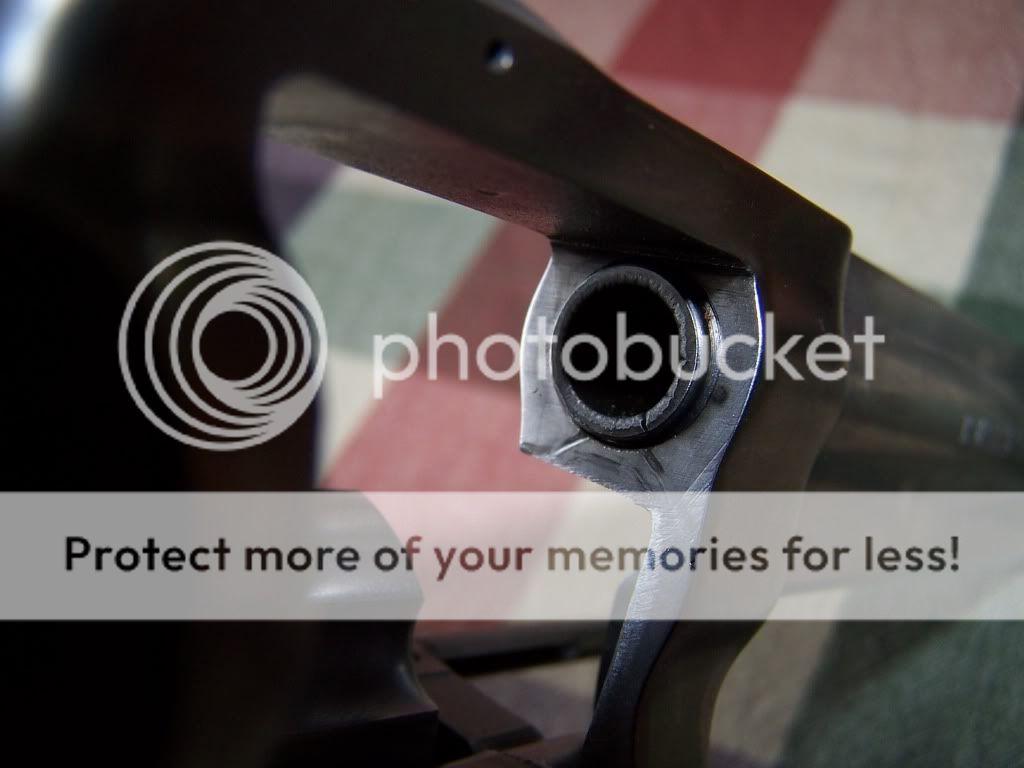annasophia
Bearcat
I have a Ruger Blackhawk in .357 and like to play around with moderately hot hand-loads and cast lead bullets. Probably 80% of my shooting is cast lead from Bumble-bee and Laser-cast in .38 spl brass. I bought the gun used in about 90% condition, so it was fairly well used before I got it. It's quite accurate and probably about average on how tight it is with cylinder lock-up. The timing is still good from what I can tell. I've noticed some flame cutting on the top strap of the frame just above the barrel/cylinder gap. It's quite minor at this point (just a little indented line or divot) but I was wondering if it's anything to worry about. I didn't notice if I caused this or if it was already that way when I bought it second-hand. Do they tend to get worse with any particular type of load (ie, fairly hot loads, or lead vs. jacketed bullets, or particular powders etc.)?

